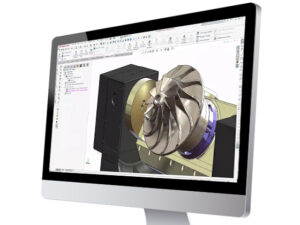In the realm of manufacturing, the production process often relies on various aids such as jigs, fixtures, and specialized tools to ensure efficiency, accuracy, and quality. Traditionally, manufacturers would outsource the production of these components, which could be costly, time-consuming, and limit flexibility. However, with the emergence of 3D printing technology, manufacturers now have the ability to reduce their reliance on outsourced manufacturing aid components.
Let’s uncover how 3D printing empowers manufacturers to produce these aids in-house, enabling greater control, cost-effectiveness, and innovation in the manufacturing process.
In-House Production
One of the key advantages of 3D printing is its ability to facilitate in-house production. Manufacturers can leverage 3D printing technology to directly produce jigs, fixtures, and other manufacturing aid components within their own facilities. This eliminates the need for outsourcing, thereby reducing lead times and costs associated with third-party suppliers. By bringing the production process in-house, manufacturers gain greater control over the manufacturing aid component production, ensuring timely availability and quality control.
Customization and Adaptability
Manufacturing processes often require specific aids that are tailored to the unique requirements of a particular product or production line. 3D printing offers unparalleled customization and adaptability, enabling manufacturers to design and produce aids precisely to their specifications. With 3D printing, manufacturers can easily modify designs, iterate on prototypes, and adapt aids to evolving needs. This flexibility allows for rapid response to design changes, process improvements, or product variations, ultimately enhancing efficiency and productivity on the shop floor.
Cost-Effectiveness
Outsourcing the production of manufacturing aid components can be a costly endeavor, especially for low-volume production or when design iterations are required. 3D printing eliminates the need for expensive tooling or molds, making it a cost-effective alternative. By producing aids in-house using 3D printers, manufacturers can reduce material waste, avoid minimum order quantities, and minimize additional setup costs. This cost-effectiveness allows for greater experimentation, faster iterations, and ultimately, more efficient manufacturing processes.
Rapid Prototyping and Iteration
The iterative nature of 3D printing lends itself well to the prototyping and refinement of manufacturing aid components. Rather than waiting for outsourced components to be produced and delivered, manufacturers can use 3D printing to quickly produce prototypes in-house. This rapid prototyping enables engineers and designers to test and evaluate aids, identify potential design flaws, and make necessary adjustments early in the process. The ability to iterate and refine aids rapidly leads to improved functionality, reduced downtime, and enhanced overall production efficiency.
On-Demand Production and Inventory Management
3D printing enables just-in-time production of manufacturing aid components. Instead of relying on outsourced suppliers or maintaining a large inventory of aids, manufacturers can produce them on-demand using 3D printers. This approach minimizes the need for excess inventory, reduces storage costs, and ensures that aids are available precisely when required. By streamlining inventory management, manufacturers can optimize their supply chains, avoid stockouts or obsolescence, and enhance overall operational efficiency.
The integration of 3D printing technology in manufacturing processes empowers manufacturers to reduce their reliance on outsourced manufacturing aid components. By embracing in-house production, customization, and adaptability, manufacturers gain greater control over their production processes. The cost-effectiveness, rapid prototyping capabilities, and on-demand production offered by 3D printing provide manufacturers with the flexibility to innovate, iterate, and optimize their manufacturing aid components. As 3D printing continues to advance, its role in reducing reliance on outsourced manufacturing aid components will undoubtedly expand, offering manufacturers new opportunities for improved efficiency, reduced costs, and increased competitiveness.
Contact Us
Interested in delving deeper into metal or composite 3D printing or would like to schedule a visit to see the technology in-person? Get in touch with one of our experts: 800-454-2233.
Share
Meet the Author

